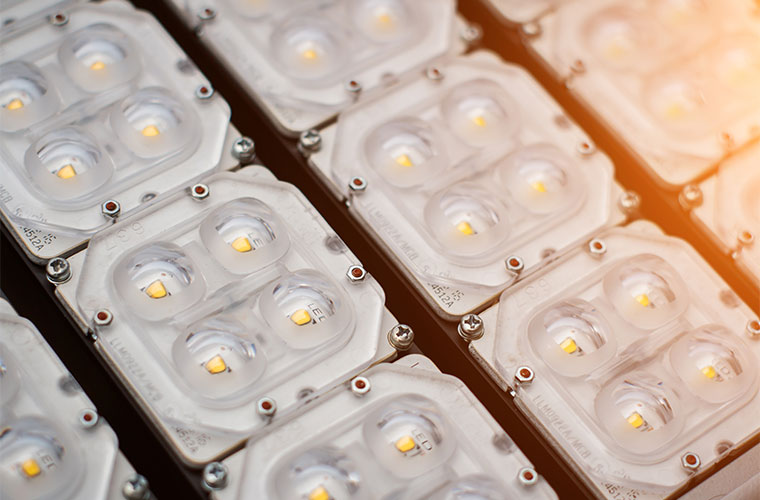The Office of the United States Trade Representative has released the latest list of products made in China that could potentially face new tariffs as a part of the ongoing trade war between the United States and China. In a decision that was somewhat unexpected, a number of lighting products and components are on the new list.
This would be a penalty to the lighting manufacturers that assemble their products in the United States, instead of importing the finished product from China. It incentivizes companies to build the entire lighting product in China, rather than use American labor to finish the products.
The Office of the United States Trade Representative said in it’s latest announcement, “China has shown that it will not respond to action at a $50 billion level by addressing U.S. concerns with China’s acts, policies, and practices involving technology transfer, intellectual property, and innovation. Rather, China is responding to action at a $50 billion level by imposing retaliatory duties. Supplemental action at a $200 billion level is in accord with the President’s direction. In addition, action at this level is appropriate in light of the level of China’s announced retaliatory action ($50 billion) and the level of Chinese goods imported into the United States ($505 billion in 2017). China’s retaliatory action covers a substantial percentage of U.S. goods exported to China ($130 billion in 2017). In order to enhance effectiveness, the level of the U.S. supplemental action must cover a substantial percentage of Chinese imports.”
The Trade Representative imposed previous tariffs on LED lighting components on April 3. An additional list, announced on July 6, includes the following:
Arc lamps
Parts of electrical filament or discharge lamps
Light-emitting diodes (LEDs)
Parts of diodes, transistors, similar semiconductor devices, photosensitive semiconductor devices, LED’s and mounted piezoelectric crystals
On July 11, the Trade Representative announced another list of lighting products under consideration for new tariffs. That list includes:
Ballasts for discharge lamps or tubes
Electrical wirewound variable resistors, including rheostats and potentiometers, for a power handling capacity exceeding 20 W
Lampholders for a voltage not exceeding 1,000 V
Sealed beam lamp units
Tungsten halogen electrical filament lamps, designed for a voltage not exceeding 100 V
Tungsten halogen electrical filament lamps, designed for a voltage exceeding 100 V
Fluorescent, hot cathode discharge lamps, other than untraviolet lamps
Mercury or sodium vapor discharge lamps or metal halide discharge lamps (other than ultraviolet lamps)
Other electrical discharge lamps, other than fluorescent (hot cathode), mercury or sodium vapor, metal halide or ultraviolet lamps
Ultraviolet or infrared lamps
Chandeliers and other electric ceiling or wall lighting fittings (o/than used for public spaces), of brass
Chandeliers and other electric ceiling or wall lighting fixtures (o/than used for public spaces), of base metal (o/than brass)
Chandeliers and other electric ceiling or wall lighting fixtures (o/than used for public spaces), not of base metal
Electric lamps and lighting fixtures nesoi, of brass
Electric lamps and lighting fixtures nesoi, of base metal (o/than brass)
Electric lamps and lighting fixtures nesoi, not of base metal
The Office of the Trade Representative said on it’s announcement of the proposed tariffs, “In accordance with section 304(b) of the Trade Act (19 U.S.C. 2414(b)), USTR invites comments from interested persons with respect to the proposed supplemental action to be taken in the investigation. To be assured of consideration, you must submit written comments by August 17, 2018, and post-hearing rebuttal comments by August 30, 2018. USTR requests comments with respect to any aspect of the proposed supplemental action, including:
- The specific tariff subheadings to be subject to increased duties, including whether the subheadings listed in the Annex should be retained or removed, or whether subheadings not currently on the list should be added.
- The level of the increase, if any, in the rate of duty.
- The appropriate aggregate level of trade to be covered by additional duties.
In commenting on the inclusion or removal of particular tariff subheadings listed in the Annex, USTR requests that commenters address specifically whether imposing increased duties on a particular product would be practicable or effective to obtain the elimination of China’s acts,policies, and practices, and whether maintaining or imposing additional duties on a particular product would cause disproportionate economic harm to U.S. interests, including small- or medium-size businesses and consumers.”:
